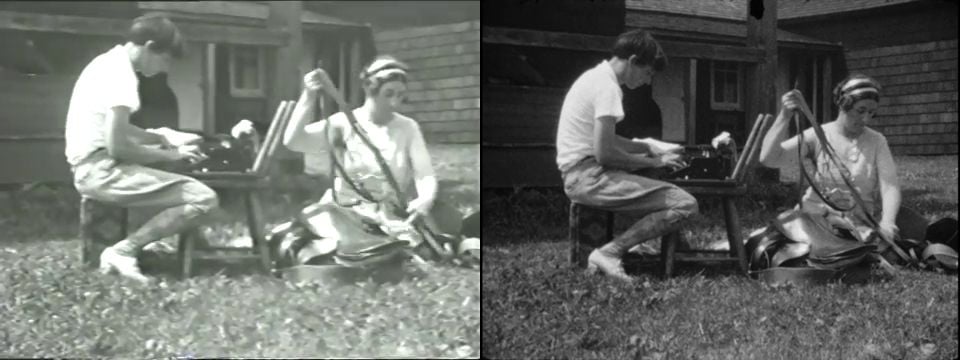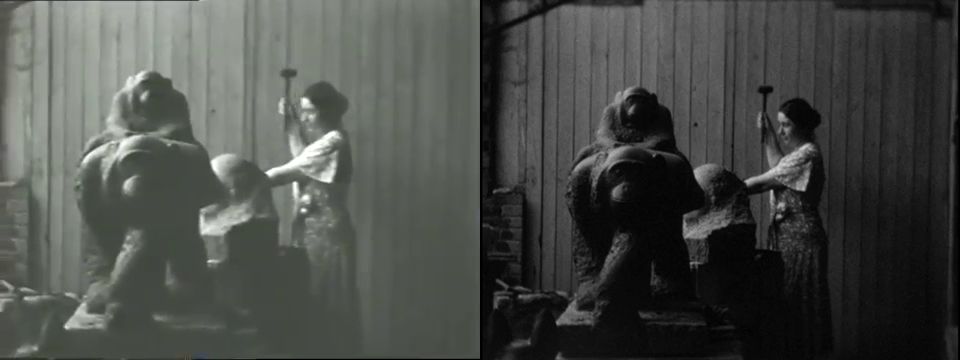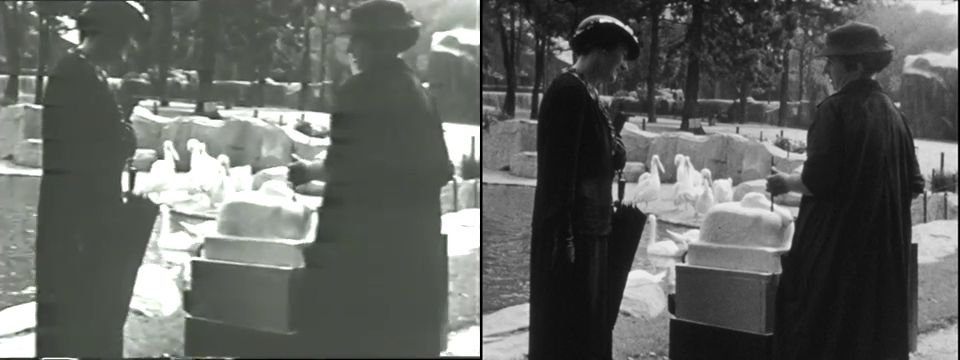Why Would an Archives Copy a Film Twice?
/https://tf-cmsv2-smithsonianmag-media.s3.amazonaws.com/blogging/featured/Chapin_studio-single_SIV.jpg)
Today we are celebrating the 2018 UNESCO World Day for Audiovisual Heritage by trying to answer this question: Why would archives invest in new copies of films that have already been copied to a useable format? To illustrate this complicated tale, we are pleased to present as a case study the Cornelia Chapin Home Movies, found in the papers of artists Marion Sanford and Cornelia Chapin, and recently preserved with a grant from the National Film Preservation Foundation (NFPF).
When is a copy worth doing over?
For many archives, motion picture film can be a tricky format to make available to the public. Although it is more likely to survive in its original format for much longer than any kind of audio or video tape—if it comes to us in good condition and is stored properly—it cannot be viewed in its original format without risking damage to the film. Like most archives, the Archives of American Art lacks film scanning equipment to safely reformat film in-house, which means we rely on specialized film labs to create digital copies for researchers.
Back in 1991, long before digitization was the standard means of reformatting for obsolete audiovisual recordings and films, the Archives had a selection of its film holdings copied to VHS video to gain access to their content. Although VHS is now itself obsolete, this action allowed for decades of access and use of many of the Archives’ films by researchers and staff alike, including the home movies of sculptor Cornelia Chapin (1893–1972).
Chapin, a sculptor active in New York and Connecticut, moved to Paris in 1934 to study the direct carving method with Mateo Hernandez. It would become her specialty, with animals being her main subjects. She was a member of “The Philadelphia Ten,” a group of women who enjoyed success as fine artists in the early twentieth century. Her films were shot between 1932 and 1936. One carefully edited film, “Hilltop Happenings, Harpursville, Summer 1932” complete with intertitles, depicts a summer day in the country for Chapin and a group of women artists, including another member of the Ten, sculptor and potter Genevieve Karr Hamlin. Additional films document Chapin sculpting animals from life in a zoo and at work with Hernandez in their Paris studio. The direct carving method documented in these films was an important and innovative technique in its time, and it happened to flourish during the early days of amateur film. However, in doing research for our grant proposal we were not able to find any other period film footage showing artists working this way in an archival repository, confirming the unique value of Chapin’s films.
Thanks to the 1991 VHS video copy of the films, researchers have had access to this footage for over twenty-five years. The Archives has also been able to make use of the footage in public programs, such as the 2014 exhibition Artists and their Models, which used clips of Chapin working in her Paris studio with a bear cub model for her sculpture Bear, installed on the grounds of the National Zoo. The VHS copy also allowed the Archives to create a digital video copy from the tape with its in-house video digitization equipment, making it possible to share it with the public on our YouTube channel.
So, why go back to the original when we already had a copy?
The answer is simple: not all copies are created equal. And, perhaps more importantly, in the case of Chapin’s home movies the original films were in urgent need of preservation. A 2016 film assessment project revealed that the original film had advanced vinegar syndrome, deterioration so severe that the film had become badly deformed and difficult to handle. We were at risk of losing our chance to capture a better copy from the original film.
Fortunately for the Archives, the NFPF understood that a much better copy of the film could be made, and that time was running out to do so. The preservation grant awarded to the Archives allowed us to have the lab make a film-to-film transfer, creating a new set of prints. Both a set of projection prints and a preservation copy were made. The projection prints not only provided copies that could be projected for the public in their original medium, but these same prints could also be digitized directly, creating dramatically better digital files for sharing than the digital copy of the old VHS tape.
Some stills from the different transfers illustrate this best.
What’s the difference?



Although archives are in the business of preservation as well as access, most archives do not have the means to copy film themselves, and are in a race against time to preserve vast volumes of magnetic media in their collections, a more dire and voluminous issue. Considering these circumstances, it is reasonable for archives to rely on any existing access copy of films—VHS video or any one of dozens of access copy formats made over the course of many decades as resources permitted and technology changed. It’s simply a practical workaround.
The argument here is not for dispensing with these old copies, or to criticize archives who depend on them for access, but to demonstrate how much better the image quality of the original film is compared to these low-resolution copies we’ve relied on all these years. As archives continue to use old VHS copies, they may be lulled into thinking they are a faithful representation of the original film, but they rarely are. In addition to improved image quality, revisiting the original films allowed us to sequence them properly, and to date them from forensic evidence on the films, creating better description. Not to mention the benefit of having an access copy that shows the full frame of the original footage, something we did not even know we were missing.
For any film, even those whose content may not seem to merit the investment of a film-to-film process, film scanning technology has so improved the quality one can expect from film reformatting that it is worth considering going back to the originals and doing this work over again. As these examples show, a high-quality digital copy made today from an original film will be as different from a legacy analog access copy as the old copy is from the original.
On this World Day for Audiovisual Heritage, the Archives of American Art, and all archival repositories in the United States, are fortunate to have a partner in the National Film Preservation Foundation, which recognizes the unique qualities and vulnerabilities of motion picture film, and provides funding for its preservation. Such resources allow us to make copies of badly deteriorated films, preserving the original’s unique material qualities when it matters most. Their support of our work to preserve these treasures has improved the quality of the copies we make available to the public a thousand fold.
This post originally appeared on the Archives of American Art Blog.



